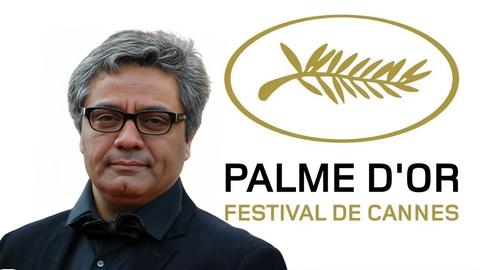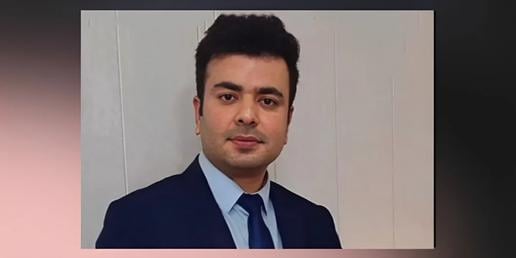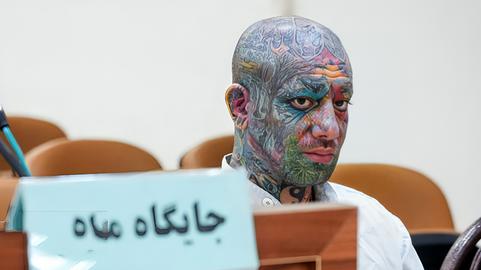
Last week, the New York-based architect Peter Eisenman was scheduled to travel to Iran to deliver lectures on architecture in Tehran and Isfahan, including a major address at the International Conference Center at the Milad Tower in Tehran, as part of the International Conference on Contemporary Architecture.
Despite the hospitable tone of much of the Iranian press prior to the event, hardline publications including Vatan, Raja News, and Kayhan attacked Eisenman and condemned the event because Eisenman had designed the Memorial to the Murdered Jews of Europe in Berlin, and worked with the Aga Khan Program for Islamic Architecture.
Although the Iranian Ministry of Foreign Affairs had already issued Eisenman’s visa, a statement released by Iranian-American architect Iman Ansari, who organized Eisenman’s visit, says that authorities called organizers to a police station a week before the conference and told them the event “would have negative consequences for the country." They refused to issue a permit.
Eisenman spoke to IranWire about his experience.
How did the invitation for you to visit Iran come about?
About a year and a half ago, I met Iman Ansari for an interview about my work. During our conversation I expressed my interest in visiting Iran and seeing Isfahan. He told me there was a lot of interest in my work from students and young architects, and it would be a good idea for me to visit. This discussion was followed at Christmastime with a 24-page supplement published on my work by Hamshahri Architecture magazine, with positive critical reviews.
A few months later, I received a letter from a research institute in Iran, which invited me and my wife Cynthia Davidson to come for a series of lectures and discussions—one in a large public forum, one at Tehran University, one at the University of Isfahan. I wanted to see the country. I’ve never seen [Iranian architecture up close] and I teach in the United States, so this was a perfect opportunity.
We were able to obtain our visas. Everything was looking very good. [The organizers] put out an announcement that I was coming and a lot of people from the architectural community were excited. They had a news conference to announce this about a month before we were supposed to arrive, and about 20 newspapers came and covered it very positively, several on the front page. About 2,000 people were expecting to hear me speak in a large hall in Tehran. Two thousand students! To get 2,000 students any place, I mean, you couldn’t get that many people in the United States.
Then a leading conservative newspaper protested that I was not the kind of person that should be visiting Iran, [and] that I was a “materialist” and “nihilistic” architect, which I’m not. Then, even though our visas had already been issued, the police refused to give a permit for my talk. There was a very small group with a very loud voice —like our Tea Party—who opposed my speaking there on ideological grounds. Finally, two days before we were to go—this was last Wednesday, May 14th —the [authorities] said, “We cannot guarantee Mr. Eisenman’s safety.” Not only was the request for a permit rejected, they couldn’t guarantee our safety, so, had we arrived at the airport, we may have been detained and probably sent back.
What was to be the topic of your address?
I had prepared a talk about the possibility that what young architects in Iran should do is to look into their own history and their culture to find those things that are not eroded or contaminated by the West. That’s why I wanted to go, to find out what things were outside western Renaissance humanist values, Enlightenment values, that all of us still possess in the West. [This is] the same thing I teach my students, to look beyond the Enlightenment and modernism, to what other things have been covered up by these kinds of values, and I thought this would be an appropriate topic for young Iranian students.
Had the organizers warned you, or had you anticipated, potential trouble from hardliners?
No, because I was going to speak about Iranian culture and Persian culture and the need to understand what that would be today. It was very pro the possibility of a Renaissance in Iranian culture. I think we were all caught by surprise.
How do you interpret the kinds of remarks Abdolhamid Noghrehkar made against you in Vatan: “Nihilist architect,” “soldier of cultural invasion,” “belongs to Zionist and Freemasonry movements,” and so on?
Well, first of all, I’m not a Zionist. I may be Jewish, but I’m not a Zionist. My ethnicity does not color my views of architecture and it never has. In fact, Israelis are very upset with my Holocaust memorial because they think it’s not “Jewish” enough, it’s too non-representational, let’s say. I’ve never been accused of being a Zionist or a nihilist or a materialist.
My understanding from my sponsors is that this never would have happened had Ahmadinejad still been [president] because the [political] right would not have been anxious about their position. But, having lost the [2013] election, they are much more virulent than they would have been had I been there two years ago.
Clearly there was an energy that was frightening to these conservative elements. I don’t know the people who were making [those remarks]. I don’t know what their background is. I certainly don’t want to go anywhere where I would be in danger, or to do something that would put the people who were sponsoring me in any kind of danger. I am, first of all, a fairly peace-loving individual.

Eisenman's Memorial to the Murdered Jews of Europe in Berlin
Were you told that part of the objection to your visit was related to your Berlin memorial?
Yes, but that was minor to saying that I was a Zionist, and a nihilist and a materialist. These were the philosophical grounds, not so much what I had done. I can’t believe that anyone really cared if I came or not. It’s quite interesting that I was cleared for visas and cleared to speak, until almost a week before I was to come.
There was another thing that was against me. I had worked for about six years for the Aga Khan and the Aga Khan Award for Architecture. These are Ismaili Muslims. And I thought that having worked for Muslims would have been a pro. Not at all. They were very upset about that work, too.
The terrible thing is, I think we made a big mistake by having a press conference. Had I just sort of slipped in, I think it would have been fine. I wasn’t being paid anything for this trip, it was just something I wanted to do. And we know there’s no Al Qaeda in Iran, and if the government says come, they’re not going to hold me in any kind of situation, so I was very relaxed about it. It was only when they said “We cannot guarantee your safety,” that I thought that was a warning that I probably shouldn’t go.
What does the cancellation of your permit say about the notional opening up of the Iranian political scene?
Well it says to me that if they’re going to be concerned about someone as small as myself, or 2,000 students—which by our standards is a lot of students, but it’s not a protest, it’s a large audience—if they’re going to be upset about this, then the opening can’t be too wide.
The message I got was it wasn’t about me so much, it was to show those people who think they now have the power because they were voted in that they should take care because they don’t have the power that they think they have. That was the major message.
I’ve gotten any number of emails from Iranians apologizing for the situation. It’s been very warming to realize how many people care about these sorts of things.
Read Reza HaghighatNejad’s article “Organizers Cancel Conference Over American Architect’s Invitation"





















comments